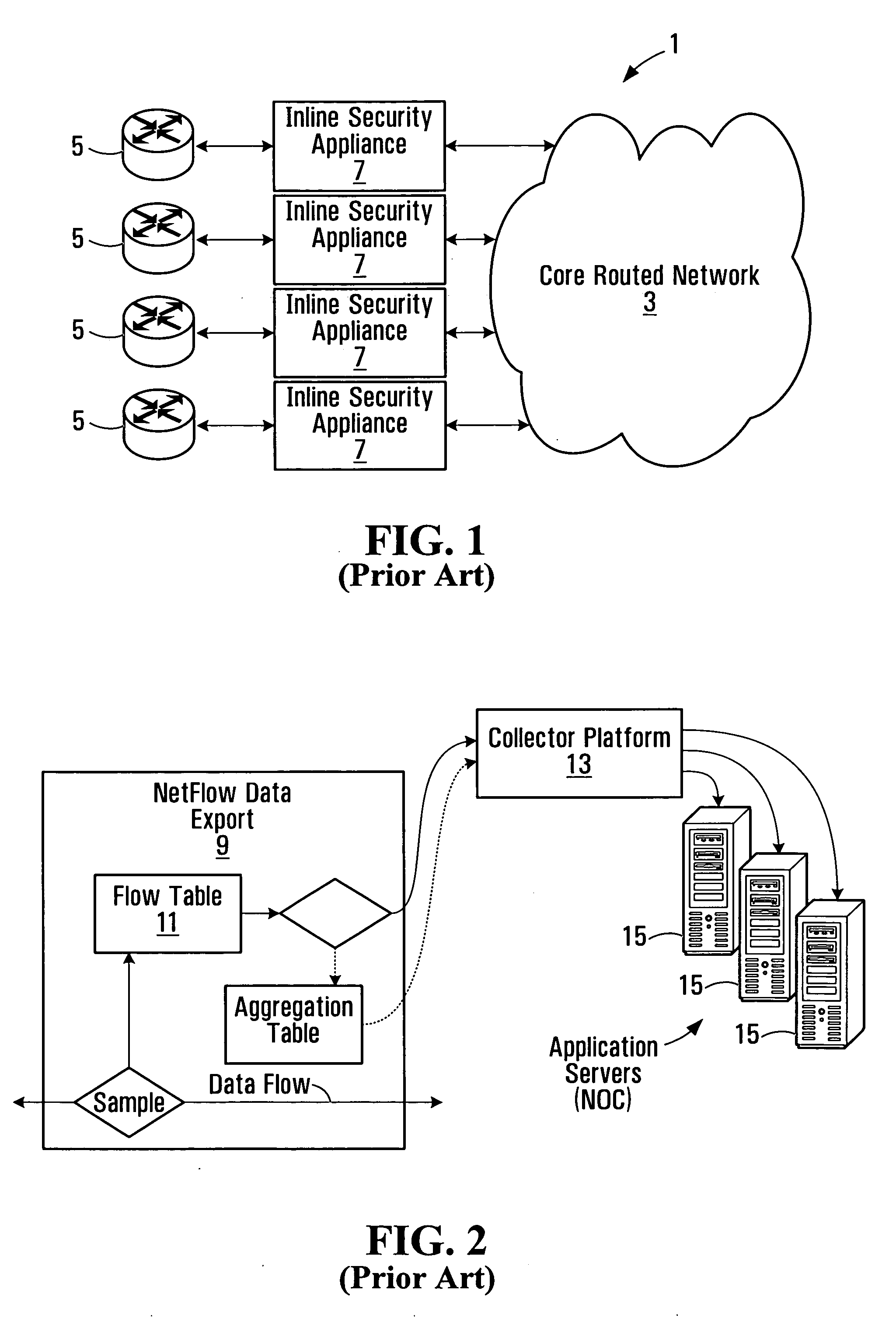[0010] In this arrangement, a router is provided with the ability to sample traffic and to determine from the sampled traffic whether data (for example data packets) in the traffic is indicative of a malicious threat. Advantageously, this removes the need to transfer data from the router to an external device such as a collector before a malicious threat can be detected.
[0011] In some embodiments, the method comprises performing the monitoring using a first criteria, and, if the determining step determines that data in the traffic is indicative of a malicious threat, performing the monitoring according to a second criteria, different from the first criteria. The first and second criteria may include first and second rates at which received
data traffic is sampled to produce the information, where the second sampling rate is higher than the first sampling rate. Thus, in one implementation, the router is configured to sample
data traffic at a relatively low sampling rate assuming that
steady state conditions apply to the network and that the network is not subjected to a malicious threat. An indication of whether a malicious threat is present may be monitored by comparing information derived from the sampled traffic with a threshold, which if exceeded indicates the presence of a malicious threat. Advantageously, enabling the router to operate at a relatively low sampling rate reduces the demand on the router resources, such as memory space and
processing cycles for
security monitoring, so that the level of monitoring matches that required for
steady state network conditions which prevail most of the time. This also assists in reducing the amount of data that may be exported from the router. (In other embodiments, the sampling rate may be the same for both the first and second criteria, or the sampling rate for the second criteria could be lower than for the first criteria.)
[0013] In some embodiments, when the router detects an indication of the presence of a malicious threat, for example, when a predetermined threshold is exceeded, the router is configured to transition from its initial monitoring state at which data is sampled at the first rate, to a second monitoring state in which data is sampled at a higher rate. This allows more data to be collected when a malicious
attack is suspected on passing the first threshold.
[0016] Thus, in some embodiments, the router is capable of adapting its
network security monitoring to
network conditions so that an appropriate level of monitoring can be adopted. A relatively low level of monitoring can be used under normal
network conditions. When the presence of a malicious threat is suspected, a higher level of monitoring can be used, and if at that monitoring level, a malicious
attack is detected, a still higher monitoring level can be used to gather more information about the particular type of
attack. In this way, resources of the router need only be used as necessitated by the network conditions.
[0020] In some embodiments, the first monitoring criteria may include
monitoring data traffic for a plurality of different malicious threats. Data which is relevant to each threat may be compared to a respective threshold, which if exceeded is indicative of the presence of the threat but may only be sufficient to raise a suspicion that the particular threat is present, rather than definitive of its presence. On detecting such an indication, the router may configure its monitoring based on information from the data flow which is indicative of that particular threat. In this case, monitoring for other types of threat may be reduced or ceased and monitoring for the selected threat increased. Advantageously, this shifting or biasing of the selectivity of data to be monitored towards data associated with the suspected threat allows the monitoring for a particular threat to be enhanced without necessarily using more resources of the router such as memory space and
processing cycles.
 Login to View More
Login to View More  Login to View More
Login to View More 


